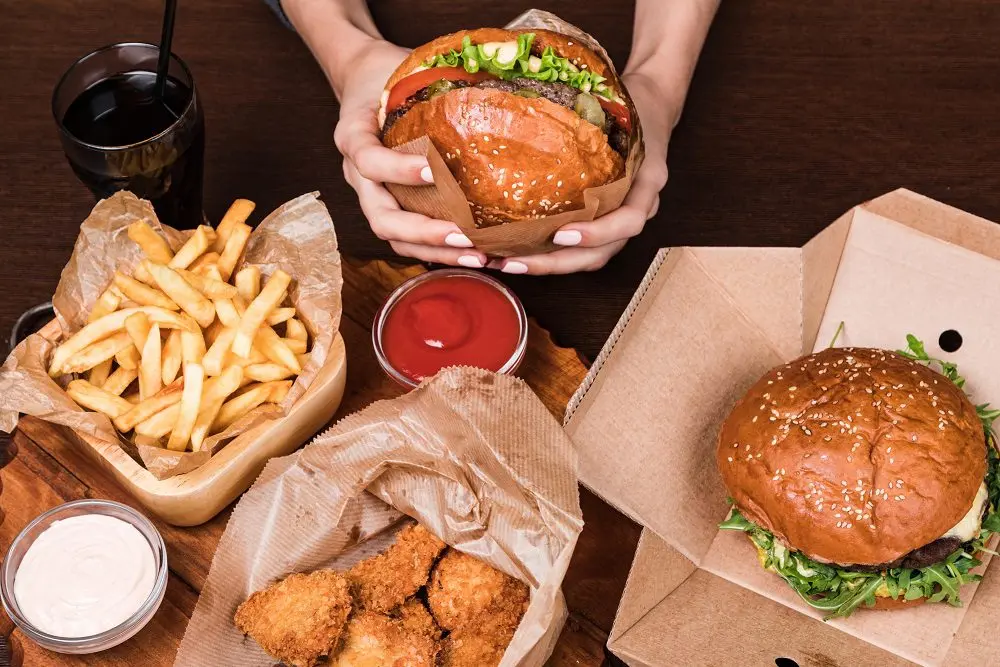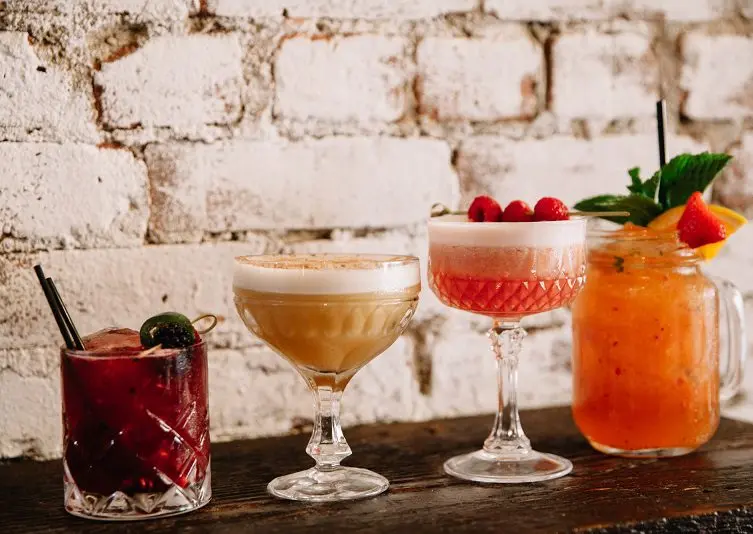Contents
There are two diametrically opposed points of view: some experts say that alcohol should not be consumed during a diet, others recommend drinking a glass of dry red wine or beer from time to time to maintain a normal weight. Even eminent nutritionists were divided into two camps. The opponent of alcohol in all forms is Professor V. G. Zhdanov, the favor of red wine was defended by Michel Montignac. It’s time to find out the arguments of each side.
Diets can be roughly divided into three categories:
- therapeutic, prescribed to patients with various diseases;
- a variety of diets designed for emergency weight loss;
- reasonable dietary restrictions adhered to by supporters of a healthy lifestyle.
Alcohol and medical diets
Therapeutic diets are prescribed to patients with various diseases, including overweight, to normalize metabolism and improve the state of the cardiovascular system. Such diets, unlike popular express diets, are recommended by doctors. Therapeutic diets are aimed primarily at healing. Getting rid of excess weight is just a side effect, so they have a more gentle effect on the body than “miraculous” weight loss remedies.
Since the doctor prescribes the therapeutic diet, he must inform the patient how alcohol is combined with the diet. So, alcohol is strictly prohibited during exacerbations of diseases of the gastrointestinal tract and pancreas.
For a long time, people who have had a heart attack or stroke should not drink alcohol. If the patient feels well, then the doctor may allow the intake of a small amount of high-quality alcoholic beverages on holidays.
Alcohol and weight loss diets
The main purpose of express and mono diets is to get rid of the weight that the person himself considers superfluous. Although such diets create a huge burden on the body, their adherents rarely consult with doctors.
Such diets are conditionally divided into two classes:
- express and mono-diets with strict recommendations regarding the number of meals and the weight of the products;
- less restrictive calorie-based diets.
Alcoholic drinks and strict diets
Strict diets usually involve a sharp decrease in the intake of any classes of substances (fats, carbohydrates, proteins) into the body. For the body, such a restriction means significant loads and the restructuring of all systems.
If during this period ethanol enters the bloodstream (and the liver perceives it as a poison), the body experiences stress, which can result in migraines, indigestion, and vomiting. But even in those cases when drinking alcohol does without serious consequences, the very rules of the diet are violated.

For example, alcoholic beverages contain carbohydrates, so a carbohydrate-free diet while drinking alcohol simply will not give the expected effect. Alcohol stimulates the appetite and dulls the sense of self-control. Taking even a small amount of strong drinks provokes a breakdown and a departure from the rules of the diet.
Express and mono diets usually do not last longer than 5-7 days. It is easier to time the diet in such a way that there are no holidays during this period than to endanger health due to a few glasses of alcohol and not achieve the desired result.
Alcohol and calorie-based diets
The nutritional value of 100 ml of pure ethanol is approximately 600 kcal. Of great importance is not only the calorie content of alcohol, but also what kind of drink to drink. Vodka, rum and tequila are very high in calories, but do not contain useful substances. The body processes these types of alcohol, however, without receiving vitamins and microelements, it literally begins to demand them (therefore, it is difficult to drink strong alcohol without eating).
Live beer contains vitamins, and wine contains enzymes that promote digestion and substances that prevent the formation of cholesterol plaques. Wine speeds up the process of fat breakdown. Liqueurs are more caloric than wine or beer, but due to the sugar they contain, they do not excite the appetite, do not require snacks and can replace dessert. Some liqueurs and tinctures (for example, from dandelions or wormwood) have a beneficial effect on digestion.
Very insidious cocktails. Their calorie content sometimes reaches 500 kcal per 100 g. Mixtures of alcohol and juices create a deceptive feeling of thirst quenching.

If it becomes necessary to drink alcohol during a diet, you need to reduce the daily ration by the appropriate number of calories, taking the data on the calorie content of alcoholic beverages from the table.
Calorie table of alcoholic beverages
| Type of alcoholic drink | Calorie content of 100 g of alcohol, kcal |
| Beer ABV 1,8% | 29 |
| Beer, 2,8% | 34 |
| Beer, 4,5% | 45 |
| Wine white, 10% | 66 |
| Dry white wine, 12% | 66 |
| Wine red, 12% | 76 |
| Wine white, 12,5% | 78 |
| Absinthe, 60% | 83,1 |
| Champagne, 12% | 88 |
| White sweet wine, 13,5% | 98 |
| Sherry, 20% | 126 |
| Sake, 20% | 134 |
| Madera, 18% | 139 |
| Sherry, 20% | 152 |
| Vermouth, 13% | 158 |
| Port wine, 20% | 167 |
| Schnapps, 40% | 200 |
| Whiskey, 40% | 220 |
| Gin, 40% | 220 |
| Rum, 40% | 220 |
| Brandy, 40% | 225 |
| Tequila, 40% | 231 |
| Vodka, 40% | 235 |
| Cognac, 40% | 240 |
| Sambuca, 40% | 240 |
| Punch, 26% | 260 |
| Calvados, 40% | 325 |
| Liquor, 24% | 345 |
In order not to disturb the diet too much, you should be guided by the rules:
- do not drink on an empty stomach, refuse aperitifs, as they excite the appetite;
- if possible, refuse strong drinks and fortified wines;
- do not mix alcohol, avoid cocktails;
- the best option is live beer or dry red wine;
- avoid fatty and spicy snacks;
- if you have to drink liquor, dessert should be discarded;
- of champagnes, brut is most preferable: it contains almost no sugar.
Alcohol in a healthy diet
It has long been noticed that the intake of large doses of alcohol and weight are interconnected. However, it is difficult to completely give up alcohol. This is advisable only if even moderate consumption of low-alcohol drinks causes the appearance of excess weight.
Otherwise, you should not make such sacrifices: live beer and quality wine in reasonable quantities are useful. The maximum allowable dose is 210 ml of ethanol per week for men, 135 ml for women.
It is allowed to drink 1-2 glasses of wine or beer per day. But more than two days in a row, alcohol should not be consumed, otherwise it can lead to alcoholism. It is forbidden to drink alcohol on fasting days.
Alcoholic diets for weight loss
In the Middle Ages, ladies-in-waiting at the English and French royal courts, despite their addiction to sweets, were famous for their thin waists. French women, feeling that they were starting to get better, sat down on a diet of wine and fruits, English women drank beer (of course, live).
Already in our time, nutritionists have discovered a relationship between the intake of these types of alcohol and weight loss. Based on scientific data, two original diets have been developed: beer and wine, which are very effective and allow you to lose 3–5 kg in a few days. However, such diets are contraindicated in:
- diseases of the gastrointestinal tract;
- allergies;
- diseases of the endocrine system;
- oncology;
- diseases of the cardiovascular system;
- pregnancy and lactation.
Beer diet
The diet is designed for 7 days. On the day they drink 1 liter of live beer and 2 liters of still mineral water. All solid foods are cooked without salt.
Allowed to eat:
- on the first day – 100 g of buckwheat porridge;
- on the second day – 100 g of boiled or baked chicken fillet;
- on the third day – 100 g of veal or lean lamb;
- on the fourth day – 100 g of boiled or baked fish;
- on the fifth day – an unlimited amount of vegetables and fruits;
- on the sixth day they drink beer and water, on the seventh day only water.
If you really want to eat, it is allowed to drown out your appetite with 30 g of dark chocolate.
Wine diet
The diet is designed for 5 days. Menu of each day:
- Breakfast: a hard-boiled chicken egg (or 2 quail eggs) and a tomato without salt.
- Second breakfast: one apple (preferably green);
- Lunch: 200 g low-fat cottage cheese or 150 g low-calorie hard cheese.
- Dinner – 200 g of dry red wine.
The time interval between meals should be at least 3 hours.









